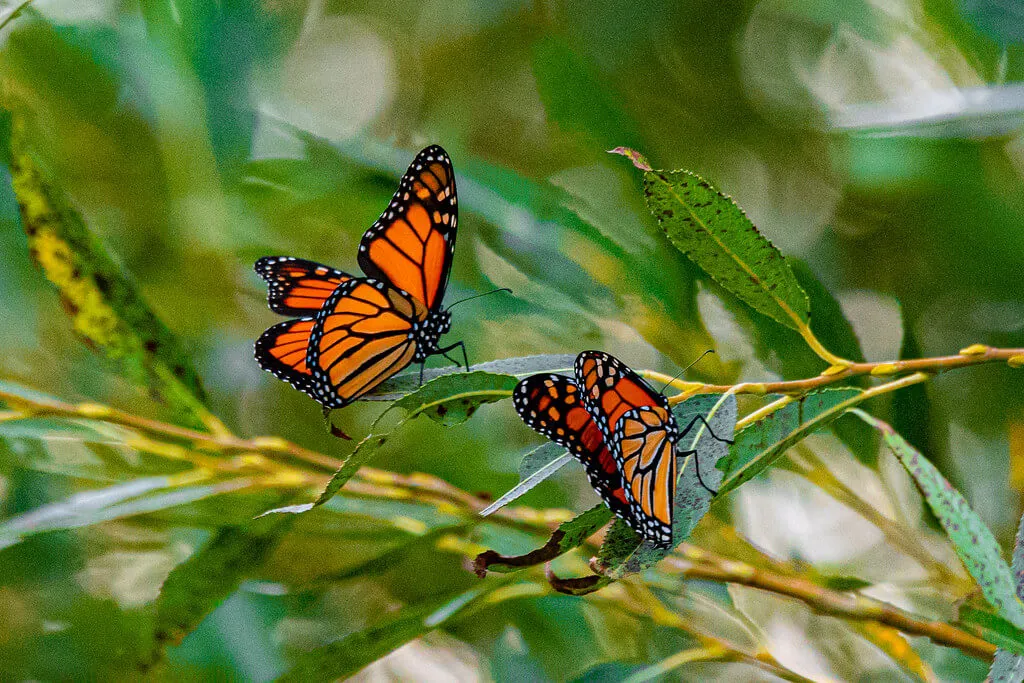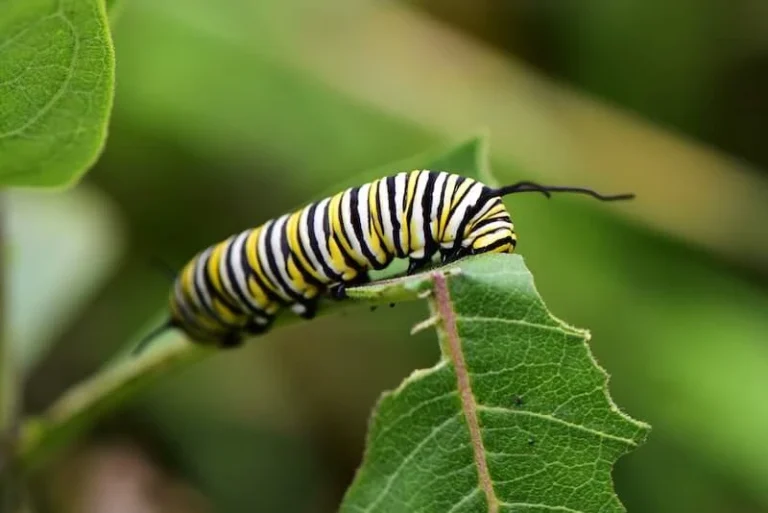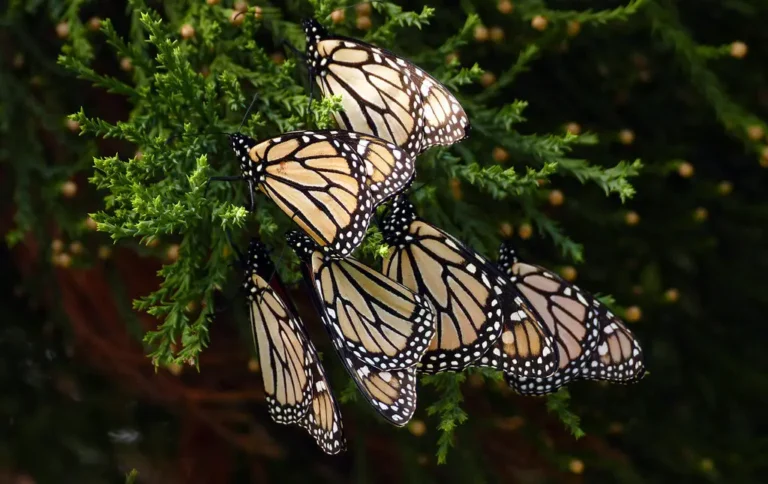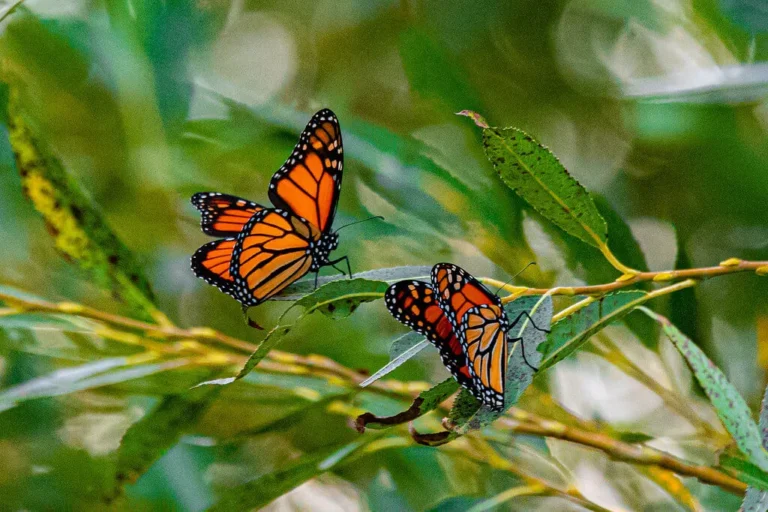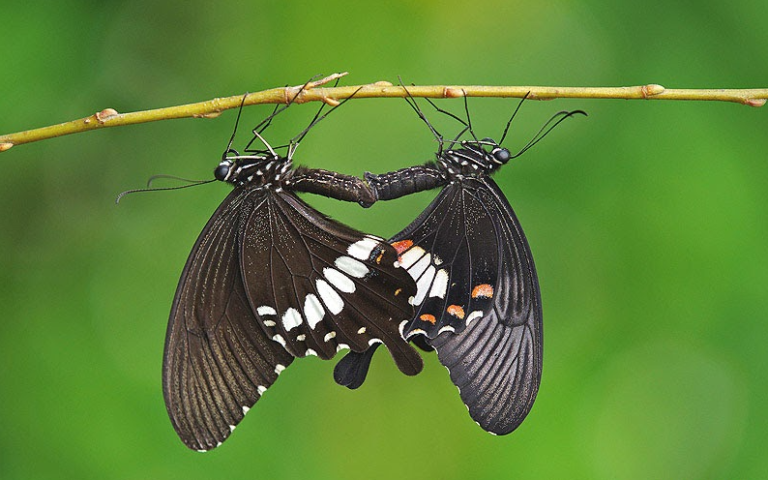How Long Does a Monarch Butterfly Live? Lifespan & Facts Guide
Quick Answer To “How Long Does a Monarch Butterfly Live“: A monarch butterfly’s life is vibrant and brief. It starts as an egg for 4 days, then becomes a caterpillar for 2 weeks. After forming a chrysalis, it changes into a butterfly in 10 days. In total, a monarch butterfly lives for about 2-6 weeks, but migration can extend its life up to 9 months. In its lifetime, it meets many natural and survival challenges.
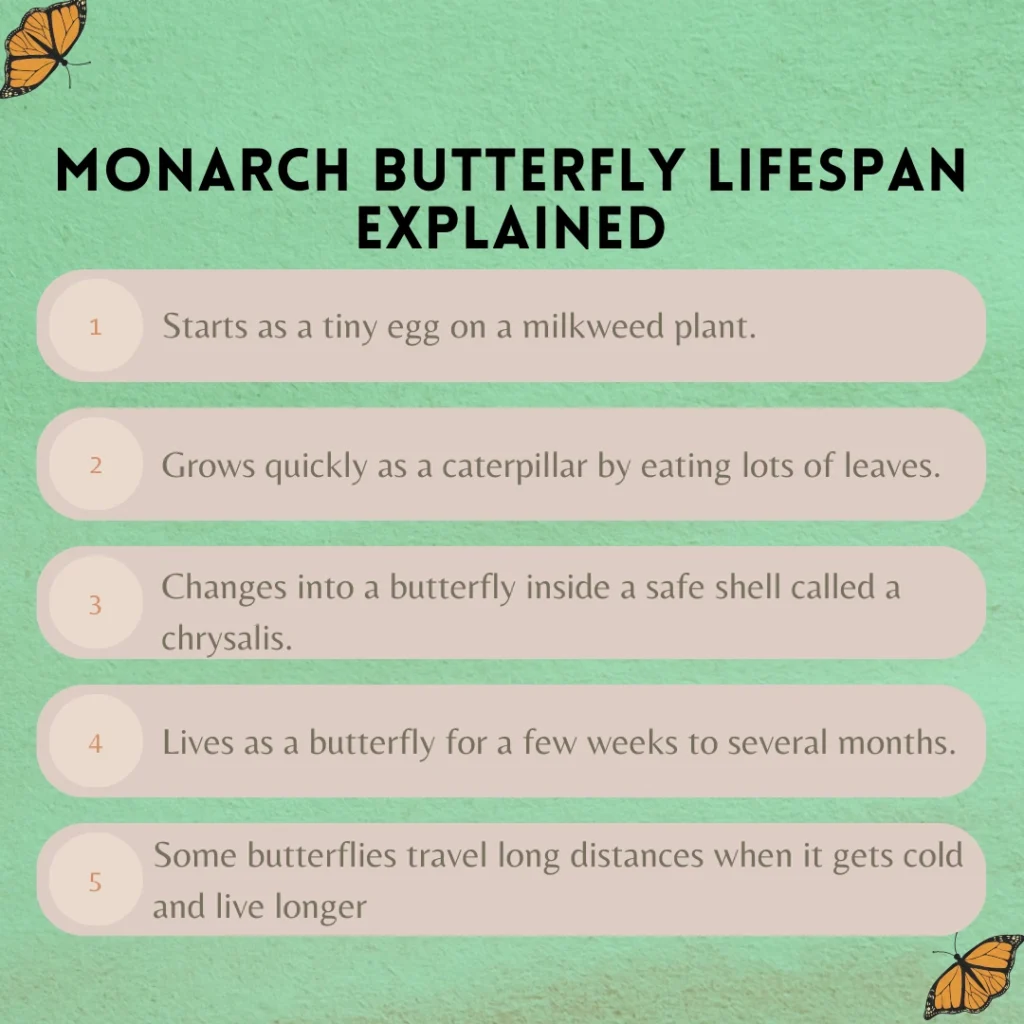
Table of Contents
Introduction
Welcome to the incredible world of the Monarch Butterfly. If you’ve ever been fascinated by the vibrant fluttering butterflies in gardens, this article is here to satisfy your curiosity about one of the most famous butterfly species – the Monarch butterfly.
Here, we will take a delightful journey to understand the monarch butterfly’s lifespan, right from the tiny egg stage to its astonishing migration route.
The Crucial Role of Monarch Butterflies in Our Ecosystem
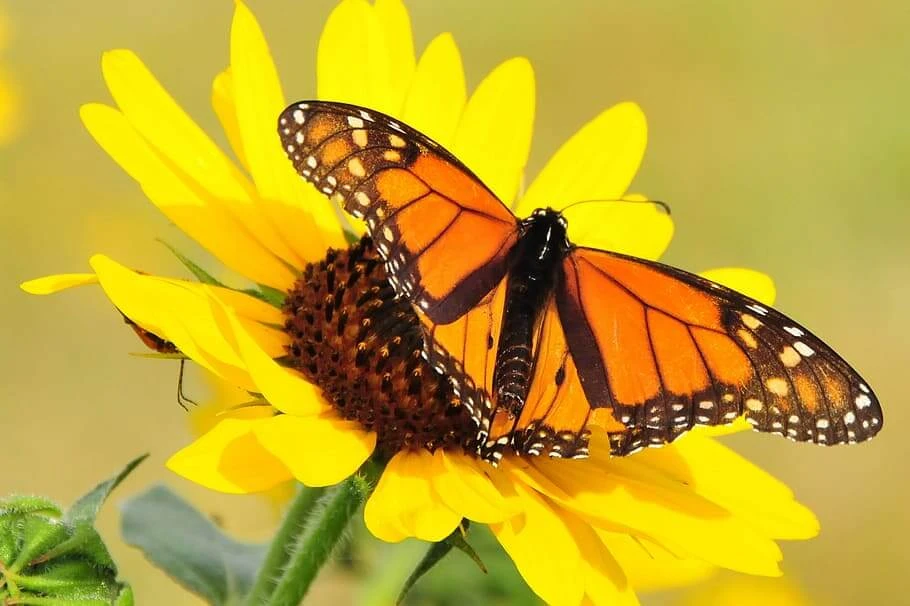
Monarch butterflies aren’t just a treat to our eyes; they play a pivotal role in our ecosystem. Serving as pollinators, they assist in the reproduction of various types of plants, making our gardens bloom with life.
Their existence is a boon to the environment, helping in the growth of flowers, and fruits, and providing food for other wildlife.
How Long Does a Monarch Butterfly Live? General Lifespan
The lifespan of a Monarch butterfly is a series of beautiful transformations, a circle of life that is as vibrant as the butterfly itself.
Generally, these beauties have a lifespan ranging from a few weeks to several months, depending on various factors, including their generation.
Hang tight as we discover the secrets behind their lifespan in the following sections.
Why Understanding the Lifespan of Monarch Butterflies is Important
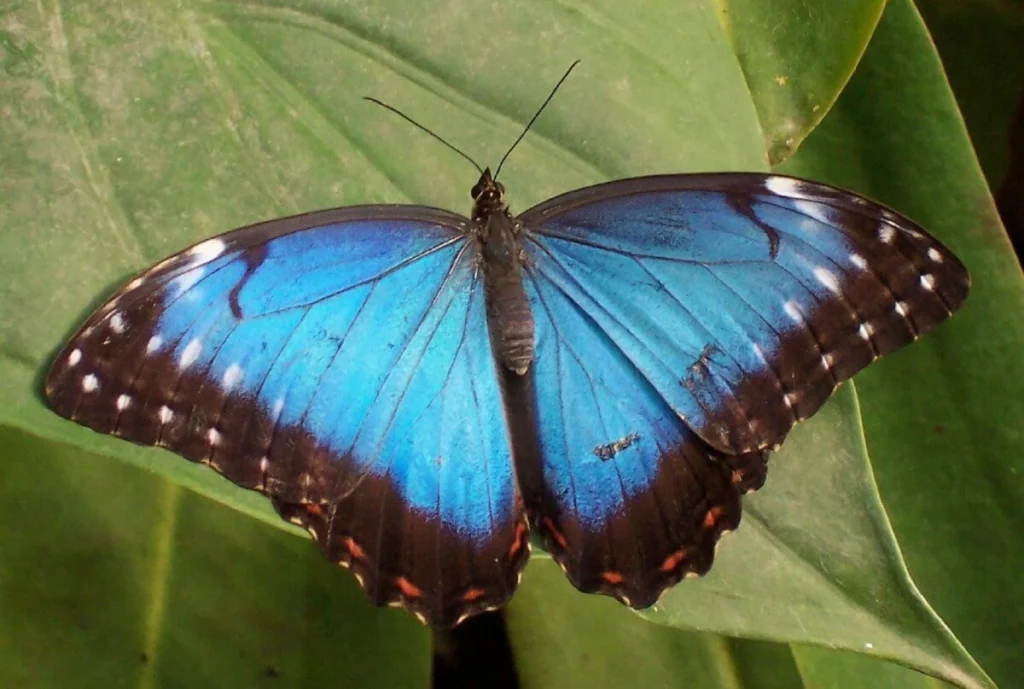
Gaining insight into the lifespan of Monarch butterflies is not just fascinating but also vital.
By understanding their life cycle, migration patterns, and the challenges they face, we can appreciate these marvelous creatures even more.
Moreover, this knowledge aids in their conservation, helping us take steps to create a butterfly-friendly environment.
Life Cycle of a Monarch Butterfly

Egg Stage

Duration
Our story begins when a female monarch lays her tiny eggs, mostly on milkweed plants. These little eggs take about 3 to 5 days to hatch. It’s a short period, but it’s the starting point of an amazing journey!
Conditions for Survival
Even in this initial stage, the environment plays a big role. The eggs need the right temperature and humidity to develop properly. A healthy milkweed plant is their first home, providing nourishment and protection.
Larva (Caterpillar) Stage
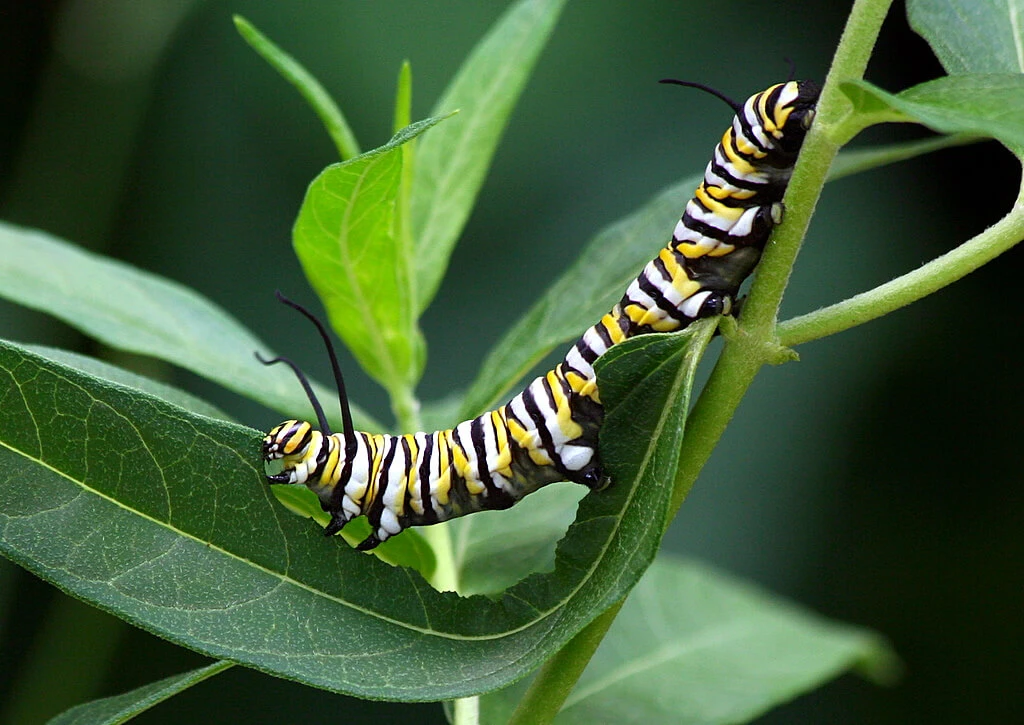
Duration
After hatching, we meet the hungry caterpillar, which has around two weeks to eat and grow as much as it can. Yes, only two weeks to go from a tiny larva to a big, healthy caterpillar ready to transform!
Growth Stages
During these two weeks, the caterpillar goes through several growth stages called instars. With each stage, it sheds its old skin and emerges slightly bigger and with new patterns and colors. It’s like watching a live art project!
Diet and Habitat
Guess what the caterpillar’s favorite meal is? It’s the milkweed plant, the same plant where it was born. These plants are not only their homes but also their dining tables, offering all the nutrients they need to grow strong and healthy.
Pupa (Chrysalis) Stage
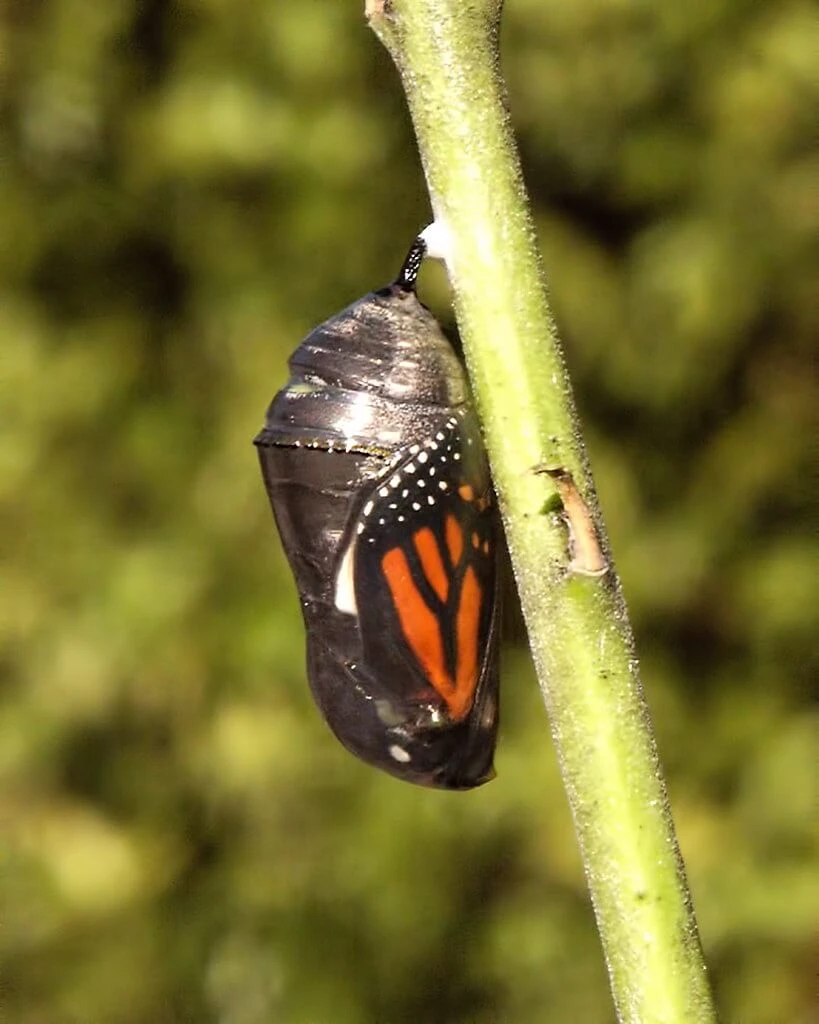
Duration
As the caterpillar reaches its maximum size, it’s time to take a break and transform into a protective shell called a chrysalis. This stage lasts about 10 days, a period of significant change where the caterpillar prepares to become a butterfly.
Transformation Process
Inside the chrysalis, a miracle happens. The caterpillar undergoes a metamorphosis, rearranging its cells and body structure. What emerges is a completely new entity, a process that showcases nature’s wonder at its best!
Adult (Butterfly) Stage
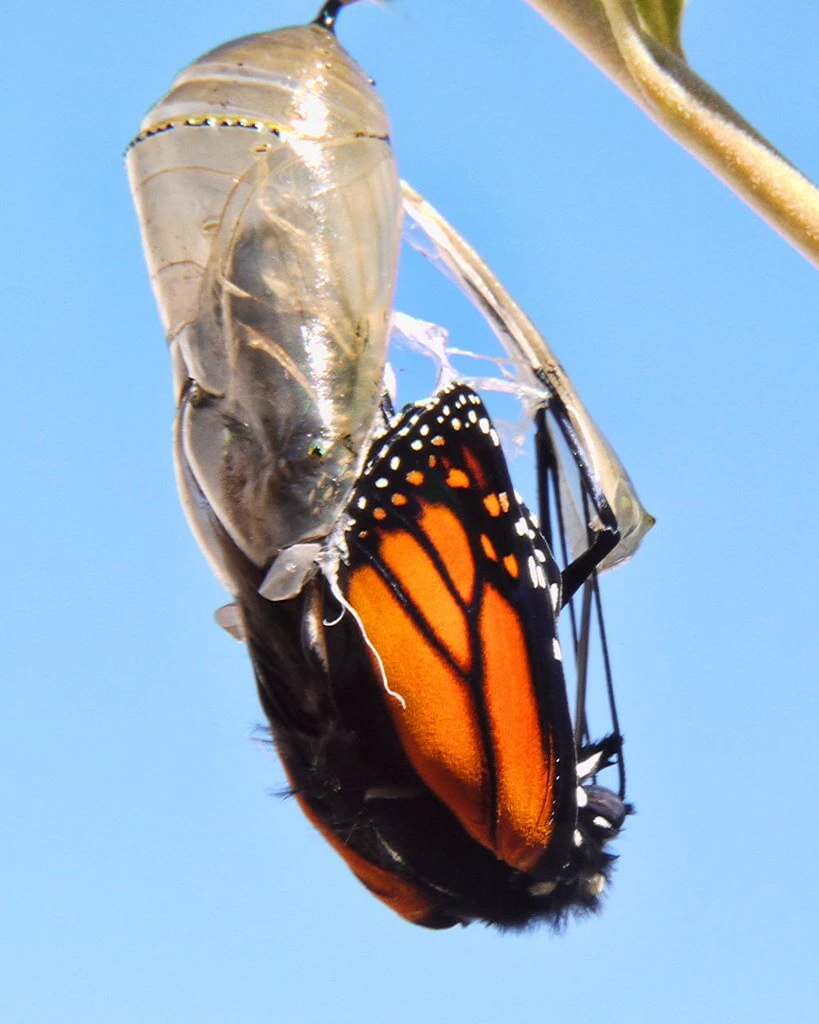
Duration
Once the butterfly comes out of the chrysalis, it embarks on a life that can last from a few weeks to several months. This period is where the monarch butterfly truly shines, flaunting its vibrant wings and bringing joy to everyone who sees it.
Physical Characteristics
The monarch butterfly is a sight to behold with its distinctive orange and black patterned wings.
But it’s not just about the looks; their bodies are designed for a long journey, with strong muscles to power their wings and sharp vision to navigate through gardens and fields.
And there we have it, the full circle of life of a monarch butterfly. But this is not where the story ends, because now we explore the different factors that can influence their lifespan.
Factors Influencing Monarch Butterfly Lifespan
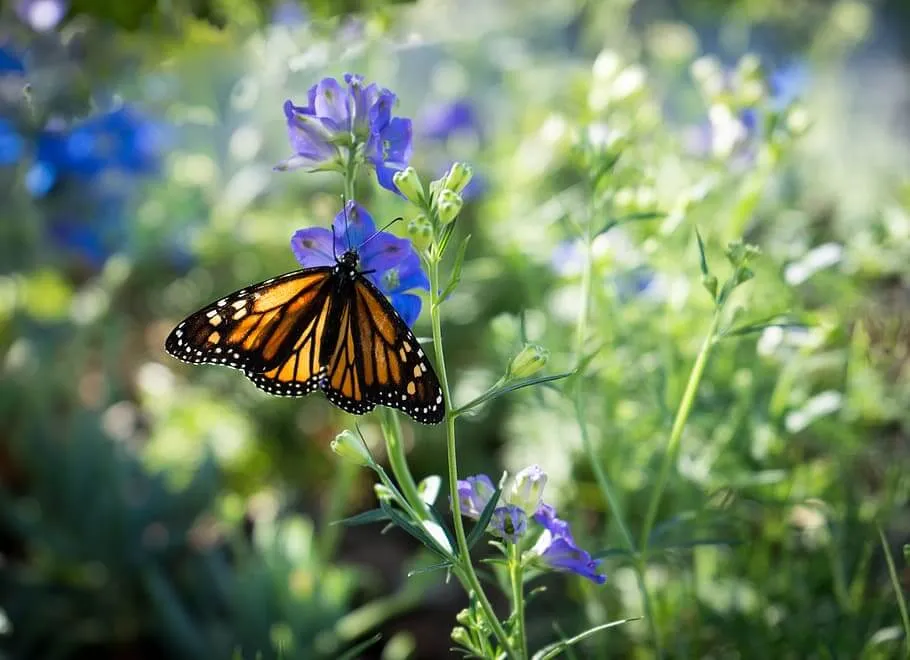
Seasonal Variations
Migratory Generation
Monarch butterflies experience different lifespans, and much of it depends on the time of year they are born. Those born in late summer or early fall, known as the migratory generation, have a more extended lifespan – living up to 8-9 months.
This generation has the important task of migrating to warmer regions to survive the winter.
Non-Migratory Generation

On the flip side, those born in spring and early summer have a shorter lifespan, generally living for about 2-6 weeks.
This non-migratory generation focuses on growing the population by reproducing and laying eggs for the next generation.
Environmental Factors
Climate Change
The changing climate is having a noticeable effect on the monarch butterfly’s lifespan. Alterations in weather patterns can disrupt their migration route, food sources, and breeding grounds.
It’s a delicate balance, and even small changes can have a big impact on their lives.

Availability of Food Sources
The presence of abundant food sources is vital for the survival of monarch butterflies at each stage of their life cycle.
The scarcity of milkweed plants, in particular, can pose a significant challenge, as it is the primary food source for the caterpillars and a breeding ground for the adults to lay their eggs.
Predators and Threats
In the natural world, monarch butterflies face threats from various predators, including birds, spiders, and even ants.
Interestingly, their vibrant colors serve as a warning sign to predators, hinting at their toxicity which you can read more about in our article on whether monarch butterflies are poisonous.
Natural Predators
In the natural world, monarch butterflies face threats from various predators, including birds, spiders, and even ants.
Their bright colors, while beautiful, signal to these predators that they might not be a tasty meal, offering them a certain level of protection.
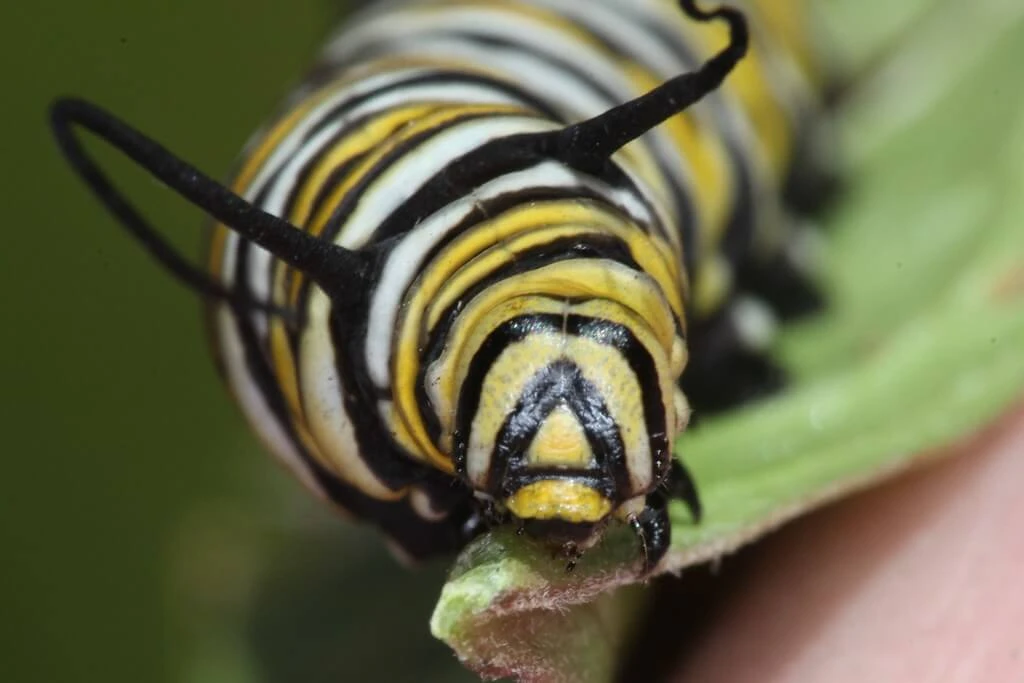
Human-Induced Threats
Sadly, human activities also pose a threat to monarch butterflies. Habitat loss due to urbanization and the widespread use of pesticides in agriculture are major concerns.
These actions destroy the natural habitats of monarch butterflies, making their survival even more challenging.
Migration and its Influence on Monarch Butterfly Lifespan
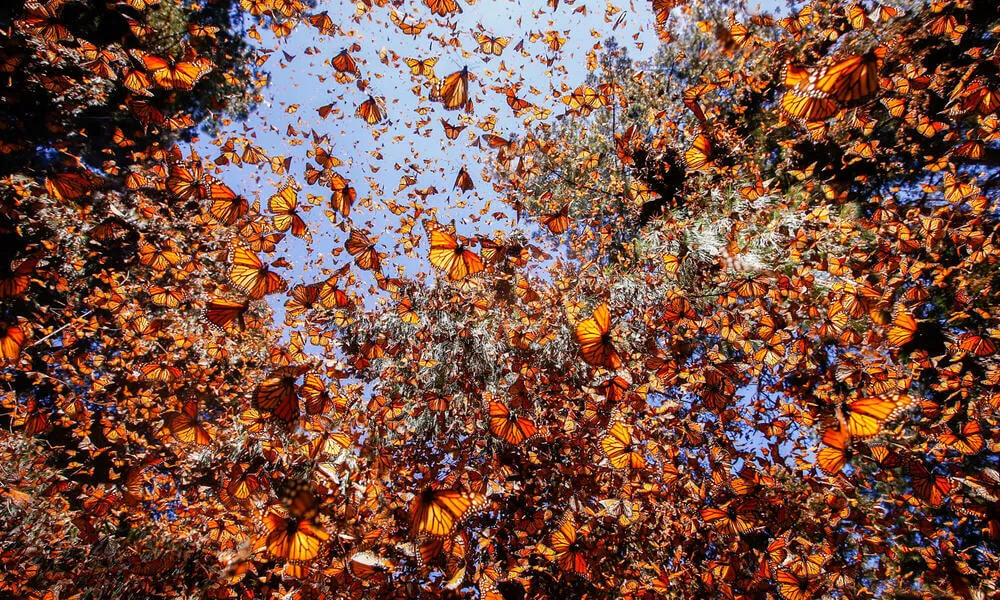
The Migratory Journey
Imagine having wings and flying thousands of miles to a place you’ve never been, guided only by instinct. This is the amazing journey of the monarch butterfly.
Every year, millions of these butterflies travel from Canada and the United States to warmer areas in Mexico and California. This incredible trip can be up to 3,000 miles long!
If you’re interested in learning more about this remarkable journey, explore the fascinating world of monarch butterfly migration.
Preparation for Migration
Before setting off on their long journey, monarch butterflies undergo a series of changes. They store fat in their bodies to use as energy during the trip.
It’s like packing a suitcase full of snacks for a road trip, but in their case, the road trip lasts for months!
Challenges Faced During Migration
Just like any adventure, the migration journey comes with its own set of challenges. Monarch butterflies have to face harsh weather conditions, predators, and the constant search for food.
It’s a tough journey, but their strong wings and determined spirit help them to reach their destination.

Importance of Migration in the Lifespan of Monarch Butterflies
Migration plays a crucial role in the lifespan of monarch butterflies. This journey helps them escape the cold winter of the north, find new sources of food, and create a new generation of butterflies.
It’s like a big, beautiful cycle of life that continues year after year.
Genetics and Physiology Affecting Lifespan
Genetic Factors Influencing Monarch Butterfly Lifespan
Monarch butterflies are like nature’s little miracles, and their genetics play a huge role in their lifespan.
Genes passed down from their parents determine a lot of things about them – their beautiful colors, their migration patterns, and yes, even how long they live.
Scientists are always busy trying to learn more about what makes these butterflies tick.
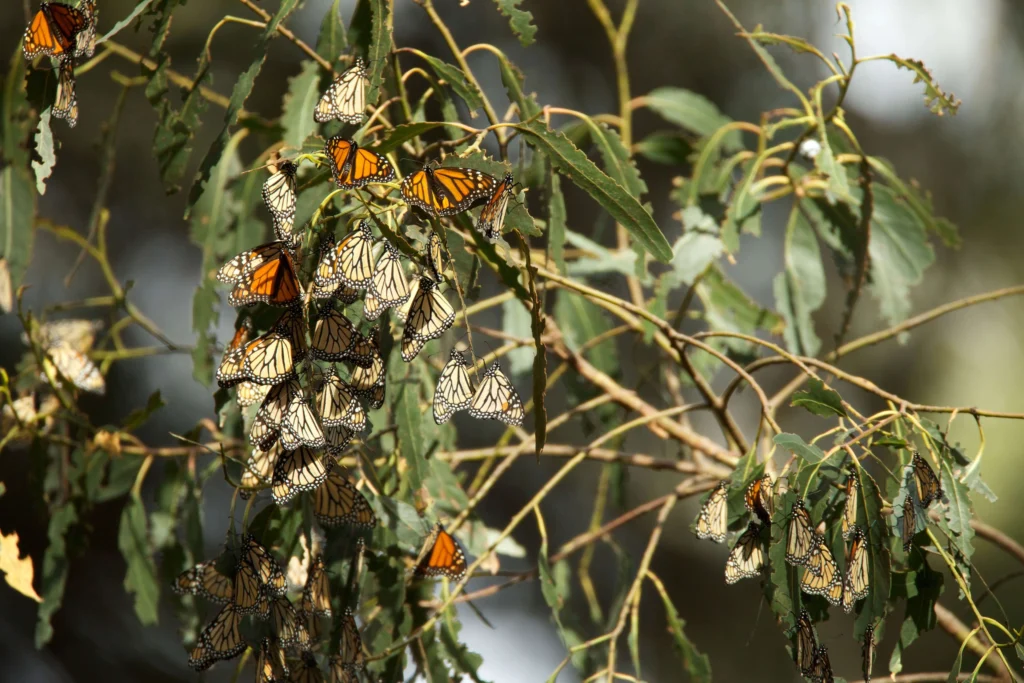
Physiological Adaptations Throughout Life Stages
From the tiny egg to a crawling caterpillar, and then to a quiet chrysalis before becoming a glorious butterfly, monarchs go through fantastic changes. This process is called metamorphosis.
Each stage is a marvel, equipped with different body structures and functions that help them adapt and survive in their changing environments. It’s like they get to be different characters in their own life story!
Research and Studies on Monarch Butterfly Genetics and Physiology
The world of monarch butterflies is vast, and there’s so much we are yet to discover.
Researchers are continuously studying these magnificent creatures to understand better the secrets behind their lifespan, their migration, and their physiology.
Every new discovery is a step closer to unraveling the mysteries of these beautiful insects.
Monarch butterflies are indeed nature’s marvels, embodying beauty and complexity in their life cycle.
They are also imbued with deep symbolism, representing transformation and rebirth in various cultures. Discover more about the symbolic meanings associated with monarch butterflies in our guide.
Frequently Asked Questions
What can shorten a monarch butterfly’s life?
While monarch butterflies are admired for their beauty, they face numerous threats that can shorten their lifespan. Harsh environmental conditions, scarcity of food sources, and predators are the most common factors.
Additionally, human activities like habitat destruction can severely impact their survival. Remember, a safe and nourishing environment is crucial for these delicate creatures to flourish.
What can extend a monarch butterfly’s life?
Interestingly, the monarch butterfly’s lifespan can vary greatly depending on several factors.
Being creatures highly influenced by their surroundings, providing them with abundant food sources and a safe habitat can surely prolong their life.
Moreover, monarch butterflies that migrate tend to live longer as they avoid the harsh winter conditions that their non-migratory counterparts face.
How do monarch butterflies reproduce?
The reproduction of monarch butterflies is a natural wonder to behold. The process begins when the male butterfly courts the female with a fascinating dance in the sky. Once the female accepts the male, they mate.
Post mating, the female finds suitable milkweed plants to lay her eggs, ensuring the next generation of caterpillars has plenty of food to grow and transform into beautiful butterflies. It’s a cycle of life, marked by grace and beauty!
Which butterfly lives the longest?
Among the butterfly species, it is the monarch butterflies that hold the record for the longest migration, but when it comes to lifespan, some other species outlive them.
The brimstone butterfly, for instance, can live up to a year, making it one of the butterfly species with the longest lifespan. This is indeed a testament to the diverse and enchanting world of butterflies.
How long is the life cycle of a monarch butterfly?
The life cycle of a monarch butterfly, from egg to adult, spans about one month.
During this period, it undergoes a series of remarkable transformations, passing through the egg, larva (caterpillar), pupa (chrysalis), and finally emerging as a fully grown butterfly.
It’s a short yet magical journey filled with growth and transformation.
What is the shortest lifespan of a butterfly?
Some butterfly species have incredibly short lifespans. For example, the adult copper butterfly lives for only about a week. This fleeting lifespan makes their existence even more precious, reminding us to appreciate the beauty in every moment.
What is the lifespan of a monarch caterpillar?
The monarch caterpillar, which is the larval stage in the life cycle, lasts for about two weeks.
During this time, it feeds voraciously on milkweed leaves, growing rapidly until it’s ready to enter the chrysalis stage, where it will transform into a beautiful butterfly.
It’s a period of rapid growth and preparation for the breathtaking transformation that awaits.
Conclusion
Wow, we’ve learned so much about the monarch butterfly lifespan together! These creatures are truly remarkable. From the time they are little eggs to the bright and beautiful butterflies they become, every stage is a wonder.
We’ve found answers to the big question: “How long does a monarch butterfly live?” Their journey is really special, filled with amazing changes and long flights during their migration phase.
Now that we know so much about them, why not go outside and see them up close? It’s a real treat to watch these butterflies in their natural places, where we can see all the things we talked about in real life.
So, let’s keep our eyes open for these beautiful butterflies and appreciate the wonderful and natural magic they bring to our lives.


